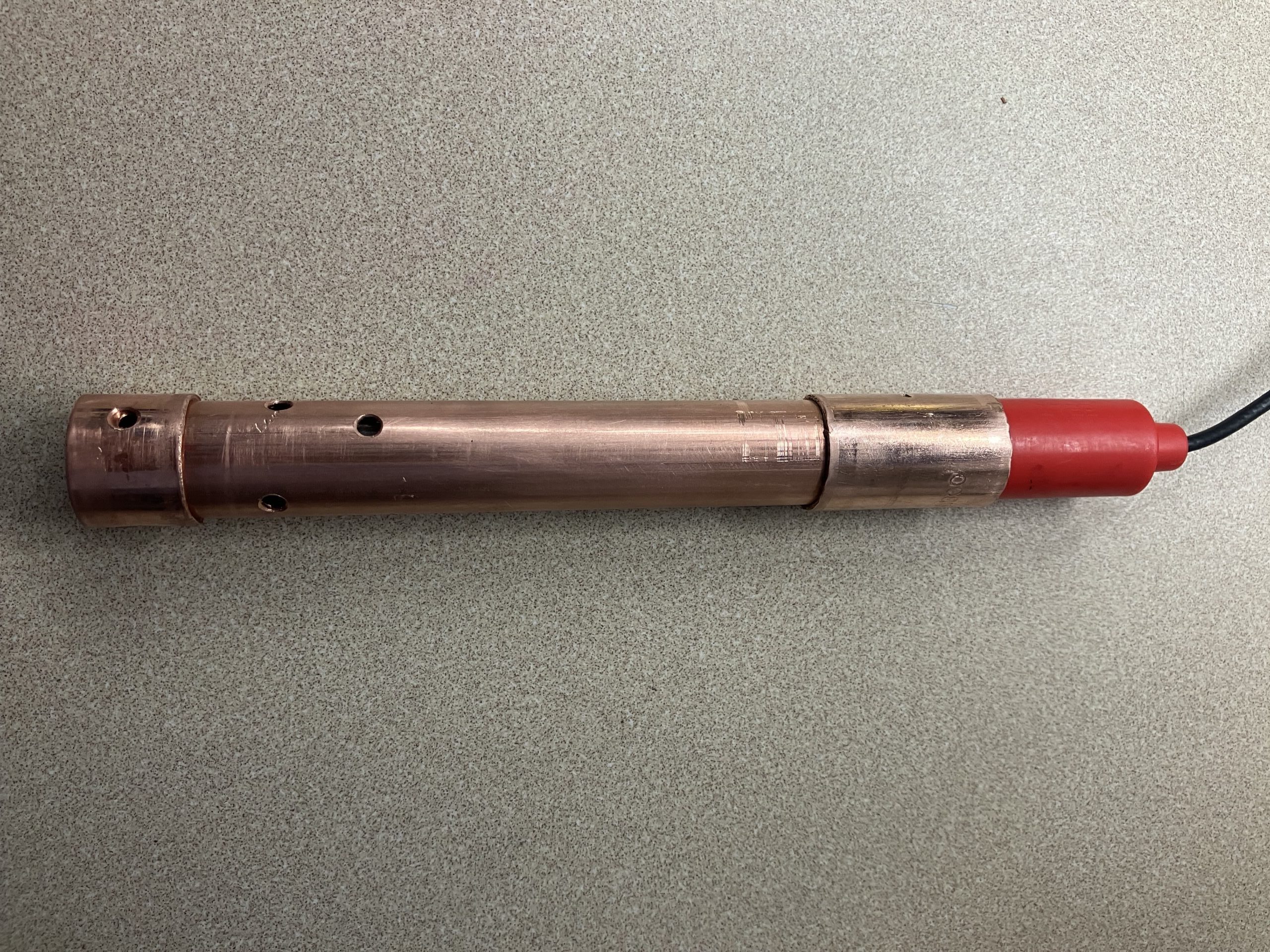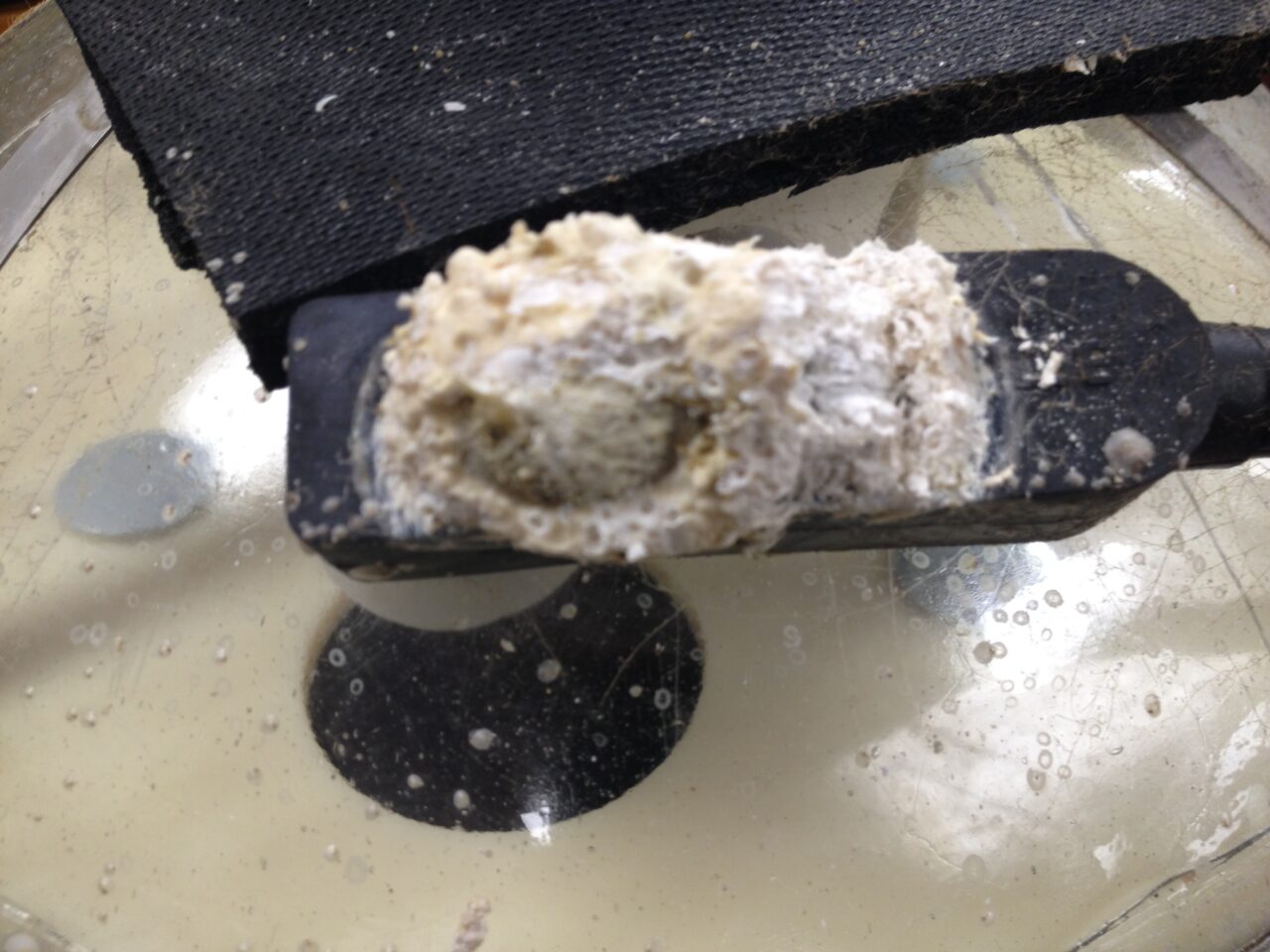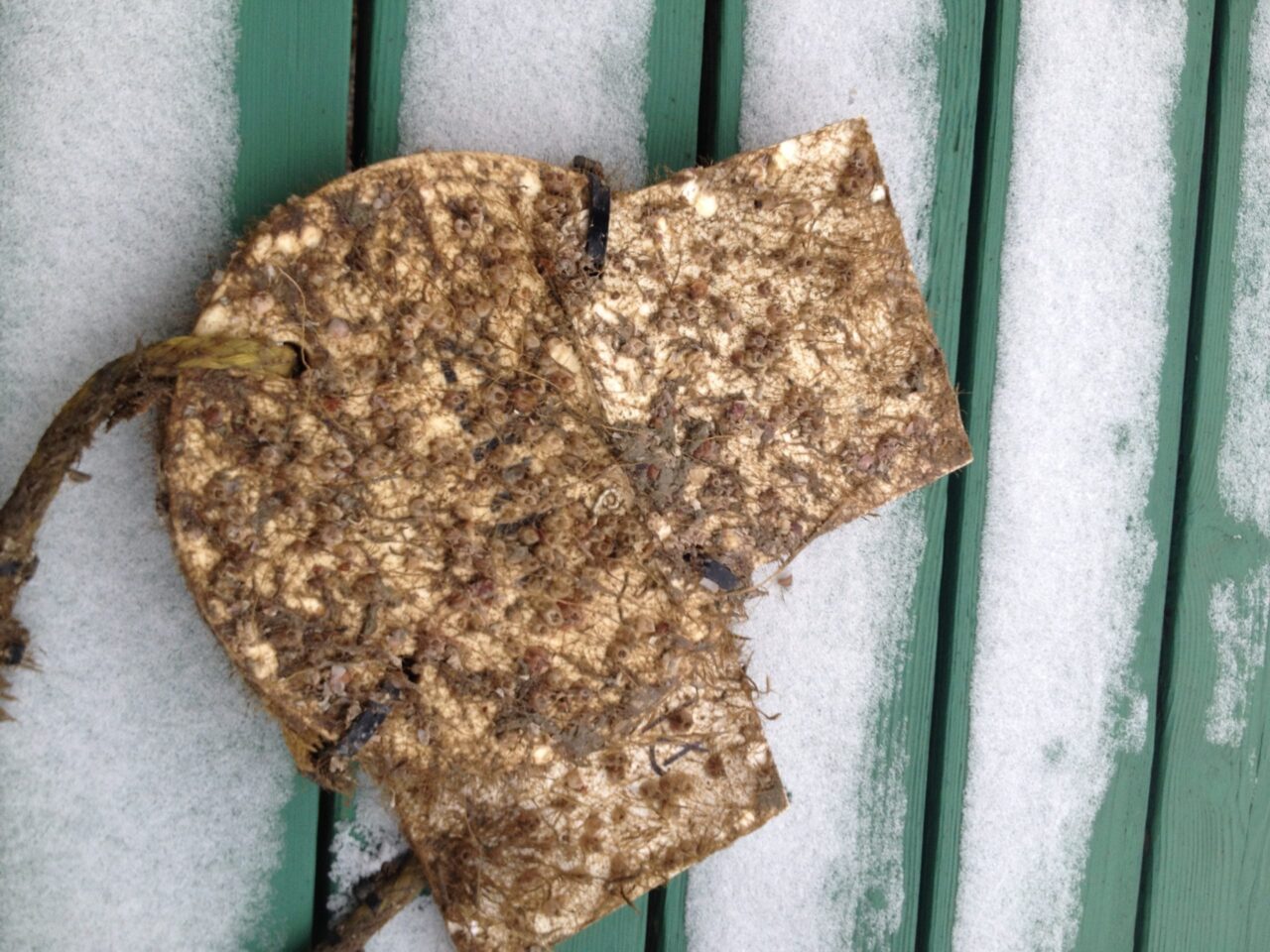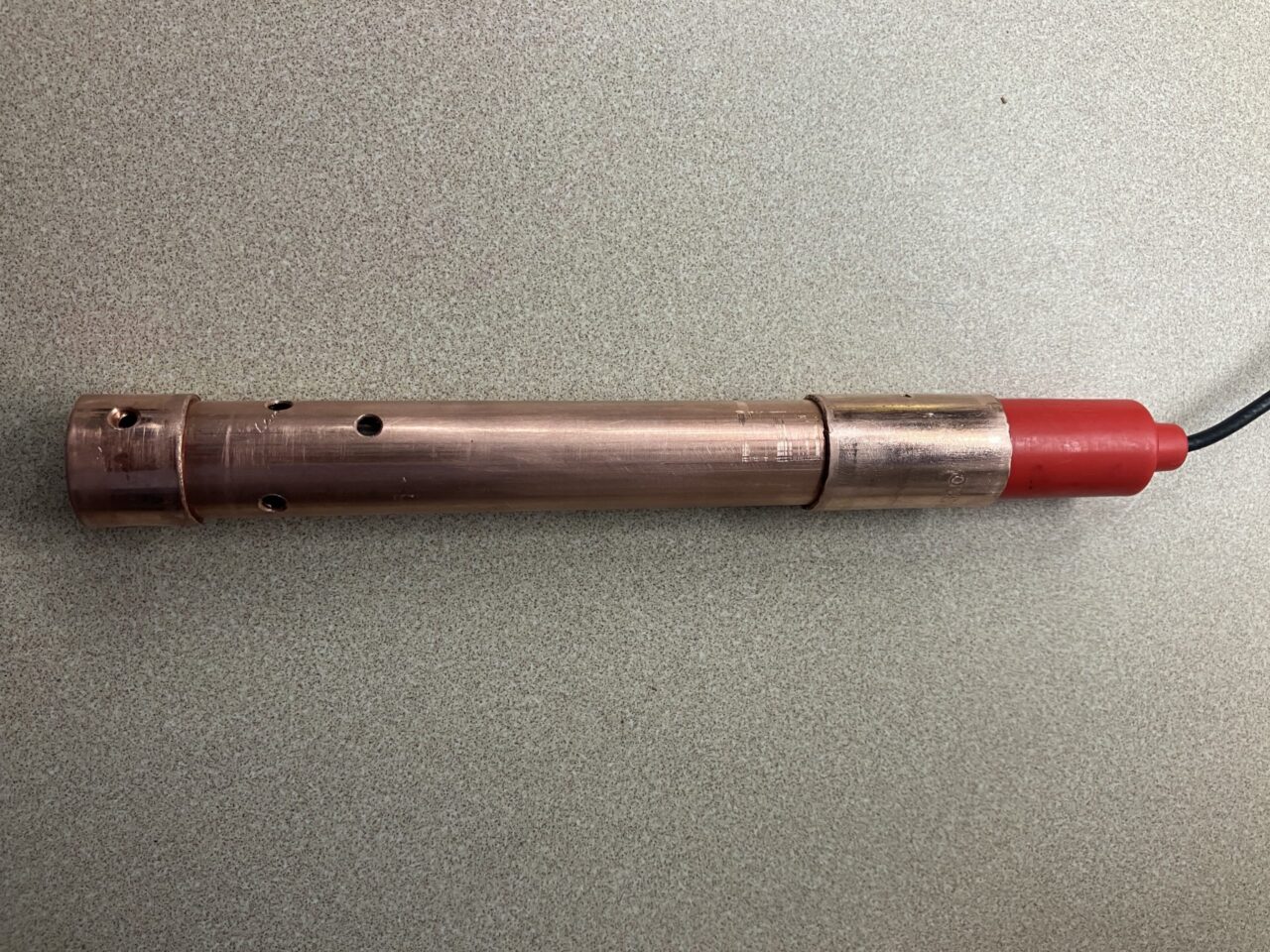How to Avoid Being Slimed: Biofouling Mitigation for Environmental Sensing

Imagine not being able to retrieve a $10,000 piece of equipment because so many mussels and sea squirts decided to call it home. This exact scenario plays out on a regular basis in the oceanographic world, where biofouling can claim whole platforms. Biofouling is the accumulation of living things—from microorganisms to algae and plant life to small animals—on surfaces that negatively affects the ability of said surface from its purpose. Even if it doesn’t ruin instrumentation, biofouling can cause data to be unusable and significantly affect the readings from even the smallest of instruments. On either side of this spectrum, the problem is clear: organisms that live on surfaces of instrumentation need to be discouraged from doing so.
On the microscopic side, microbial biofilms can adhere themselves onto most types of surfaces by way of a number of chemical attachment mechanisms, and macroscopic invertebrates can similarly attach themselves with a number of different types of secretions. In order to mitigate biofouling, then, one or more of the following must occur: the mechanism of adhesion needs to be defeated before attachment occurs, the organisms must be kept from attempting to adhere in the first place, or the organisms and their attachments must be mechanically removed on a regular basis.

Approaches to Biofouling Mitigation
Biocides
In the case of microbial biofouling, two classes of biocides are used—oxidizing and non-oxidizing—in order to kill the organisms in question. With oxidizing types, this usually means a substance applied continuously or periodically, like chlorinating agents or peroxides. In the case of non-oxidizing biocides, this is usually an aldehyde or other poisonous or toxic chemical.
Surface Changes
Surface chemistry and surface modification can also be effective means of mitigating biofouling, as surface porosity and material both make a significant difference in how an organism can adhere itself to a surface. Surface modification, such as mechanical or optical engraving or chemical etching, can change how easily adhesives cling to different surfaces, making it harder for different organisms to get a hold of the surface and stay on. As for surface chemistry, certain metals which are more likely to grab hold of oxygen, like copper, zinc, and others, can cause greater free radical formation, and thus handily stop organisms from being able to adhere to them by creating an oxide layer that interferes with the organism. The use of paints containing copper, zinc, or other metals seems to fit in with this class of approach, and also has been used to great effect, especially in the cases of buoys, vessel hulls, and other oceanic systems. The use of polyethylene, fluoropolymers, chloropolymers, or other low wetting hydrophobic materials (including glasses) also allows easy sloughing of biofilms, making biofouling formation much more difficult.
Ionizing Radiation
Just as metallic surfaces rely on ion transport to generate free radicals that prevent organisms from adhering, so can ionizing radiation be a source of protection from biofouling. In this case, all manner of radiation, from ultraviolet light through x-rays and on up to gamma rays, have been shown to be effective in mitigating biofouling. In all of these cases, though, a significant amount of power must be used, and in some instances, a radioactive source must be included. While the source itself draws no electrical power, it still necessitates additional handling precautions, is the source of significant consternation where environmental impacts may be concerned, and requires a significant source activity level to be used underwater.
Electrostatics
Electrostatic methods have also been used to cause the same ion gradients to mitigate biofouling as are mentioned above from metals and ionizing radiation, often to greater effect. However, these methods are also significantly more power intensive than the alternatives, just as UV and X-rays would be. While they don’t have the many of the downsides of ionizing radiation, they still are causing a static electric field to be projected through an insulator into water, which means there will be a large leakage current, to say nothing of the inefficiencies of bringing battery voltage up to the several kV range.
Mechanics
Several forms of mechanical removal have been used as mitigation measures, including foam rubber balls, static and oscillating metal inserts in pipes and other cavities, gas and liquid curtains, and reciprocating scrapers/wipers. Most of these work in their particular contexts but are generally better for large and/or static equipment emplacements, especially where larger amounts of power are available.
Ultrasound
One other form of mitigation that has been used to good effect, both on its own and in combination with biocides, is ultrasonic excitation. This decreases the probability of bonding and also can just destroy cells attempting to bind to a surface. In addition, ultrasonic treatment also increases the permeability of cell walls and membranes, and of tissue in general, allowing it to make biocides significantly more effective by moving them into organisms faster and more efficiently.

Measurement Vulnerabilities
While biofouling can render equipment less usable and data unreliable, care must be taken to not allow biofouling mitigation techniques to do the same. In particular, ion selective electrodes (ISEs) such as pH and ORP probes, electrical conductivity (EC) probes, and dissolved oxygen (DO) probes all have vulnerabilities to different biofouling mitigation methods.
Ion Selective Electrodes
For ISEs, any shift in ion concentrations can throw off a measurement, as occurs with electrostatic and ionizing radiation methods, and possibly also with metallic surface methods. However, it seems as though some of the leading suppliers in the market today, such as Onset and YSI, are still using copper anti-biofouling guards for their pH sensors. Testing is underway to see if that type of guard makes a difference in the data from pH probes used in the FieldKit ecosystem.
Electrical Conductivity
Similarly, for electrical conductivity, the increase of conductive material, especially an increase in local ion concentration, will significantly interfere with the measurement being made. As above, though, Onset and YSI, along with other suppliers in the field, are using copper guards on their EC probes. Also as above, testing is underway to see if these guards change the output data from the EC probes used in the FieldKit ecosystem.
Dissolved Oxygen
For DO probes, measurement problems can occur if the materials around the probe are oxidizing. This means that as a material used as an anti-biofouling guard is oxidizing, like copper, zinc, or other metals do, it is using up some of the dissolved oxygen around the probe that the probe would normally be detecting. As with the other two modalities above, current best practices seem to indicate the use of copper guards, and also as above, testing is underway to see if these interfere with DO measurements. Another note on DO is that ultrasonic methods can introduce more oxygen into solution, and hold its level at supersaturation via cavitation, so this method may also induce errors in DO measurements.
Conclusion
At this point, the most promising method across the various parameters of power use, toxicity, danger to personnel and the environment, and several other factors like cost, seems to be the simple copper guard or “sock”. As this is a convenient attachment to fabricate and test, FieldKit will be doing so with the various water chemistry probes that are used in waters likely to induce biofouling. Results will be forthcoming.
